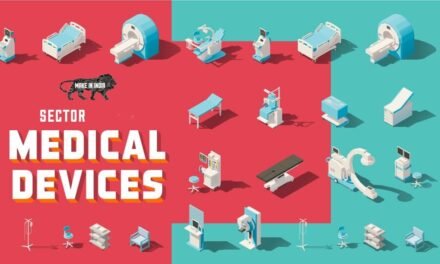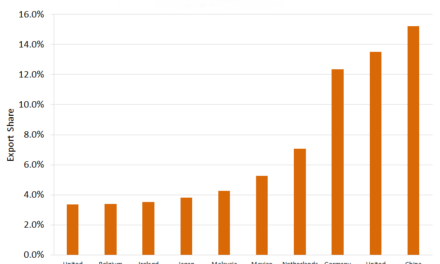
How does the aging population affect the demand for medical devices?

The aging population significantly impacts the demand for medical devices, creating a robust market driven by the unique healthcare needs of older adults. Here’s how:
1. Increased Prevalence of Chronic Diseases
- Aging is associated with higher rates of chronic conditions such as diabetes, arthritis, cardiovascular diseases, and cancer, driving demand for diagnostic, therapeutic, and monitoring devices.
- Example Devices:
- Blood glucose monitors
- Cardiac implants like pacemakers and stents
- Dialysis machines for kidney-related conditions
2. Rising Need for Mobility and Assistive Devices
- Older adults often face mobility challenges due to conditions like osteoporosis, joint degeneration, or neurological disorders.
- High-Demand Devices:
- Wheelchairs, walkers, and canes
- Robotic exoskeletons for mobility assistance
- Prosthetics and orthotics for rehabilitation
3. Demand for Diagnostic and Imaging Devices
- Early diagnosis of age-related diseases such as osteoporosis, Alzheimer’s, and cancer requires advanced imaging technologies.
- Devices in Demand:
- X-rays, CT scans, and MRIs
- Bone densitometers for osteoporosis diagnosis
- PET scans for neurodegenerative disease assessment
4. Focus on Home Healthcare Solutions
- Many aging individuals prefer home-based care to maintain independence and reduce hospital visits.
- Popular Home-Based Devices:
- Blood pressure monitors
- Oxygen concentrators and CPAP machines for respiratory conditions
- Remote monitoring devices integrated with telehealth platforms
5. Increased Need for Surgical and Implantable Devices
- Conditions like arthritis and cardiovascular issues lead to higher demand for surgical interventions and implants.
- Examples:
- Joint replacement implants (e.g., hip and knee replacements)
- Coronary stents and heart valves
- Spinal implants for degenerative disc diseases
6. Growing Market for Rehabilitation Devices
- Post-surgical and chronic disease rehabilitation drives the need for physiotherapy and rehabilitation devices.
- Examples:
- Robotic rehabilitation systems
- Therapy mats and resistance bands
- Neuromuscular electrical stimulators
7. Advanced Monitoring and Wearable Technology
- Wearable health devices are popular for real-time tracking of vital signs and early detection of potential health issues.
- Wearables in Demand:
- Smartwatches with heart rate and ECG monitoring
- Fall detection devices for safety
- Wearables that track sleep and physical activity
8. Rising Demand for Long-Term Care and Nursing Facilities
- The aging population drives the need for medical equipment in long-term care settings.
- Examples:
- Beds with adjustable settings for comfort and care
- Lifting devices to assist caregivers
- Advanced wound care systems for pressure ulcers
9. Demand for Cognitive and Mental Health Devices
- Neurodegenerative disorders like Alzheimer’s and Parkinson’s disease require specialized devices for diagnosis, monitoring, and management.
- Devices in Use:
- Brain imaging technologies like fMRI
- Cognitive stimulation devices
- Wearable sensors for tracking neurological symptoms
10. Personalized and Precision Medicine
- Older adults benefit from medical devices tailored to their specific health conditions, body types, and genetic profiles.
- Examples:
- Customized prosthetics and orthotics
- Personalized drug delivery systems
- Genomic sequencing tools for disease predisposition analysis
11. Emphasis on Preventive Care
- Preventing age-related conditions increases demand for scrthe eening and monitoring devices.
- Devices in Focus:
- Cancer screening tools (e.g., mammography, colonoscopy)
- Cardiovascular risk assessment devices
- Devices for early detection of osteoporosis
12. Integration of IoT and Telemedicine
- Remote monitoring and IoT-enabled devices help manage health conditions effectively, reducing hospital admissions for older adults.
- IoT Devices:
- Connected glucose monitors
- Smart pill dispensers with reminders
- Remote ECG and vital sign monitors
13. Palliative and End-of-Life Care
- Devices supporting comfort and symptom management for terminal illnesses are increasingly in demand.
- Examples:
- Infusion pumps for pain management
- Ventilators and oxygen delivery systems
- Specialized beds for hospice care
14. Healthcare System Implications
- Aging populations put pressure on healthcare systems, increasing the demand for cost-effective devices that enhance efficiency and reduce patient care burdens.
Economic and Industry Impacts
- Market Growth: Aging populations are expanding the global medical device market, particularly in regions like Japan, Europe, and the United States, where aging demographics are most pronounced.
- Innovation Focus: Companies are prioritizing the development of age-friendly devices that are user-friendly, durable, and affordable.
Challenges
- Affordability: Ensuring devices remain accessible to older adults on fixed incomes.
- Training: Providing training to patients and caregivers for using advanced medical devices.
- Regulation: Adapting devices to meet safety standards specific to older populations.
The aging population is a key driver of growth in the medical device industry. By addressing the specific healthcare needs of older adults through innovation, affordability, and accessibility, medical devices are poised to significantly enhance the quality of life and health outcomes for this demographic. The industry will continue to see increased demand for solutions that prioritize preventive care, home-based management, and rehabilitation, shaping its future trajectory.




























